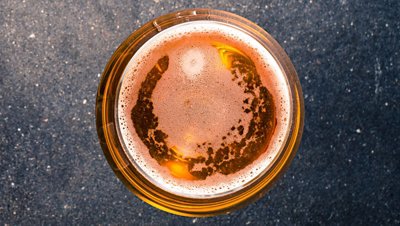How to ensure quality control in the beer industry?

How to Ensure Quality Control in the Beer Industry?
Craft beer brewhouses and large-scale breweries alike must rely on rapid and accurate spoilage organism detection to avoid beer contamination. Due to the nature of the microorganisms, beer contaminants can easily go undetected by traditional microbiology detection.
Not only does beer contamination yield off-flavor, acids, excessive carbonation and undesirable aromas, beer spoilage leads to time waste and capital loss. Even worse, microbial contamination may result in recalls and brand fallout.
As part of a brewhouse’s quality management program, it is key for brewers to identify contamination sources and prevent microorganisms access within the brewery.
Therefore, the entire production timeline - from raw-material oversight to brewery inspection - must be monitored with meticulous measure. For example, raw materials added to the hot side of the brewery can be contaminated, despite the sterilization step of the kettle. Meanwhile, the brew plant itself can harbor contamination on vessels, piping, cooling systems, measuring instruments, on the floor, and even in the air. Testing must be consistent as part of the quality control protocol to ensure product quality along the brewing process.
What are the Most Common Bacteria and Organisms in Beer?
The most prominent culprits of beer spoilage microorganisms are bacteria and wild yeast.
Bacteria
Generally, bacteria do not survive in beer, however certain species - including Lactobacillus and Pediococcus, often referred to as lactic acid bacteria (LAB) - can. They are by far the most encountered beer spoilers and considered to be responsible for 60% to 90% of contaminations.
LAB can exhibit resistance to hop thanks to the presence of genes, horA and horC, which cannot be detected by traditional microbiology testing. It is only the Polymerase Chain Reaction (PCR) technique that can identify hop-resistant bacteria and their ability not only to survive in beer, but also to multiply over time and spoil beer at a later date.
Wild Yeast
Wild yeast (i.e. Brettanomyces/Dekkera) is problematic because it lives in beer by resisting high alcohol levels, even with limited oxygen and low pH environments. Brewers from around the world consider the wild yeast Saccharomyces var. diastaticus to be the most problematic. Saccharomyces var. diastaticus causes “gushing” due to the unwanted fermentation. The source of the contamination can be from the brewer’s yeast itself or from within the brewery once established.
How to Detect Beer Spoilage?
Speed, sensitivity, and specificity each play a role in determining the best beer spoiler detection method for your brewery. Today, brewers can choose between traditional culture-based microbiology or Polymerase Chain Reaction (PCR) Analysis.
Traditional microbiology detection involves a trained technician to collect samples without cross contamination, understand the culture media, and interpret the results as applicable to the brewer’s quality control application. Pros are cost, simplicity, manipulation and accessibility; however, cons present longer time lines (two to four days for bacteria and five to ten days for yeasts), trained staff, microbiology lab equipment and false negatives.
On the other hand, the PCR test method provides same-day detection and identification of beer spoilers. This modern technique identifies a specific segment of the target microorganism’s DNA, then amplifies this DNA trace to detect its presence.
Quality Control Solutions to Prevent Beer Contamination
For today’s most rapid and accurate spoiler detection, a brewer requires a centrifuge, thermocycler, pipettes, and test kits for microorganism detection.
One such kit, the VERIFLOW® PCR spoilage detection assay, is ready-to-use and easy to employ. It uses DNA Signature Capturing Technology, which quickly amplifies and identifies spoilage organisms.
Brewers that need more through-put or have larger operations should consider GENE-UP® BREW. This kit combines key elements of the VERIFLOW® PCR spoilage detection with the powerful multiplex RT-PCR platform to offer brewers superior identification in under three hours.
bioMerieux’s beer testing solutions provide a user-experience unlike any other PCR technology. It offers brewers piece-of-mind by reducing capital and operational costs associated with other PCR. Each kit provides a simple workflow that can be done onsite, with minimal training, at any stage of beer production, and in any style of beer.


